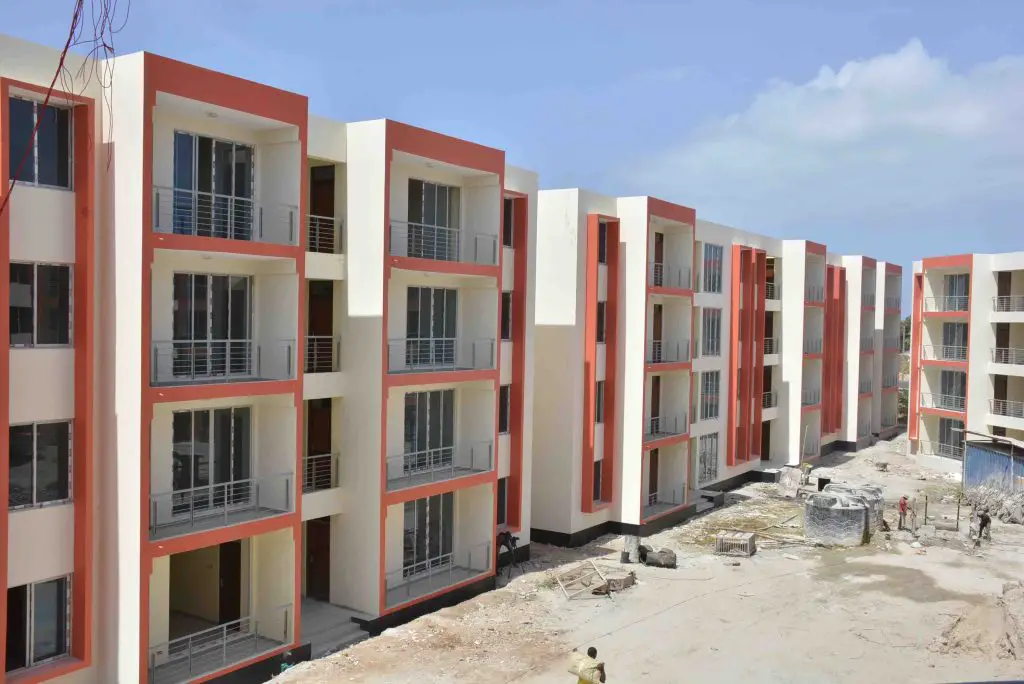- Housing demand in Kenya is estimated at 250,000 units annually.
- With a supply of only 50,000 new houses annually, there is an 80 per cent annual housing deficit.
- President William Ruto has detailed his plan to deliver 200,000 housing units annually.
Kenya has had an ambitious plan to address the housing shortage in the country, with the two past regimes placing affordable housing as one of the key priorities.
Housing demand in Kenya is estimated at 250,000 units annually. With a supply of only 50,000 new houses annually, there is an 80 per cent annual housing deficit.
The previous government led by former President Uhuru Kenyatta had an Affordable Housing Programme that had targeted to deliver at least 500,000 units by last year, but failed way below with less than 10 percent of intended units being delivered by 2022.
President William Ruto has detailed his plan to deliver 200,000 housing units annually through collaboration between the national government, counties and the private sector.
Ruto has already set the ball rolling with at least three projects launched in the past three months, wit 7,800 units in the offing.
The biggest so far is the Syokimau project, a residential area in the west of Machakos County, which has 5,300 houses.
President Ruto is engaging the country’s Parliament to put in place a mandatory Housing Fund which will help in building resources for long-term lending to developers and homeowners through mortgages.
Can Kenya make housing affordable?
The answer is yes according to the World Bank.
“Kenya can make housing more affordable to many more Kenyans, and in turn create new channels to boost overall economic growth both at the national and county levels,” World Bank notes in its report dubbed: Kenya Economic Update: Housing—Unavailable and Unaffordable.
Numerous benefits can be attributed to improving access to housing finance, including economic growth, job creation, and deepening of the financial sector.
There are various global examples supporting the “housing multiplier effect” as every dollar spent directly on a housing unit results in various indirect benefits to the country.
Kenya has the right fundamentals in place to achieve results on a significant scale, the global lender notes.
Collaborative efforts between government and the private sector are however required, and a supportive policy and regulatory environment strengthened so that strategies and financing vehicles can be leveraged.
Narrowing the affordability gap in the housing market and improving financing for both developers and users remains key, World Bank says.
For long, banks have had limited access to long-term funding and few institutions have accessed capital markets to fund mortgages, hence Kenya ought to explore the role of Savings and Credit Cooperative Societies (SACCOs) to help bridge the gap in the housing finance market.
Capital Markets
To drive the affordable housing agenda further, the country is keen to tap resources in the capital markets.
The regulator, Capital Markets Authority (CMA) in collaboration with Sanduku Investment Initiative, Association of Pension Trustees and Administrators of Kenya (APTAK) and the Nairobi Securities Exchange (NSE) are collaborating to create what will be known as Kenya National REIT (KNR).
Sanduku Investment Initiative is a funding initiative for Kenya’s Economic Transformation Agenda targeting participation by financial sector players (Pension funds, Saccos, Insurance companies, Islamic finance institutions, Banks) and Global investors with an objective of raising Ksh1 trillion (USD7.9 billion) over the next five years.
KNR is aligned to the government’s Economic Transformation Agenda to deliver affordable housing units across the country.
The affordable housing progamme will be executed under the Sanduku Investment Initiative which will also include infrastructure.
KNR will register all REITS (real estate investment trusts) for the development of affordable housing and infrastructure through Special Purpose Vehicles.
REITs are regulated investment vehicles that enable collective investment in real estate, where investors pool their funds and invest in a trust with the intention of earning profits or income from real estate, as beneficiaries of the trust.
KNR has been conceptualized as an accreditation body for REITs and service providers within the REITs value chain and to ensure the investment grade REITs are structured for immediate investor uptake.
Accelerating financing of real estate development
It will also be the focal point for engagement with policy makers.
CMA chief executive Wyckliffe Shamiah said: “REITs have been identified by the national government as a critical avenue to ramp up the rollout of affordable housing units through a public and private sector partnership.”
“Evidently, REITs have the potential to facilitate access to capital through the capital markets to meet the growing demand for purpose-built real estate solutions including for those at the bottom of economic pyramid,” Shamiah added.
APTAK President Hosea Kili added that the Fund Managers Association and the Retirement Benefits Authority will work with trustees of pension funds in reviewing investment mandates “to facilitate participation by pension funds in REITs as an alternative asset class’’.
Sanduku Investment Initiative chairperson Tom Mulwa said REITs that will be registered under the Kenya National REIT initiative are expected to be scalable with the potential to contribute to national economic growth, employment creation, and avail decent housing to deserving Kenyans.
“This objective is also aligned to the government’s commitment to support deepening of the domestic capital market,” Mulwa.
Nairobi Securities Exchange Chief Executive Geoffrey Odundo observes that REITs have unmatched potential for fund raising through the capital markets to support the affordable housing programme.
Kenya became the third African country in 2013 to establish REITs as an investment vehicle with the REIT Regulations providing for Income-REITs, Development-REITs and Islamic-REITs.
“The use of REITs for affordable housing is expected to enhance liquidity and offer investors good returns. The NSE is pleased to be part of this collaborative effort to issue REITs for affordable housing which offers investors an opportunity to diversify their portfolios,” Odundo said.
Once the industry stakeholders validate the proposed model, further engagements will take place to ensure there is investment appetite and support as the rollout of affordable housing units picks momentum and traction.
This will be followed by the structuring of a pilot REIT under KNR.
The capital markets initiative is expected to complement fund raising efforts for the ongoing joint affordable housing programme spearheaded by the National and county governments.










